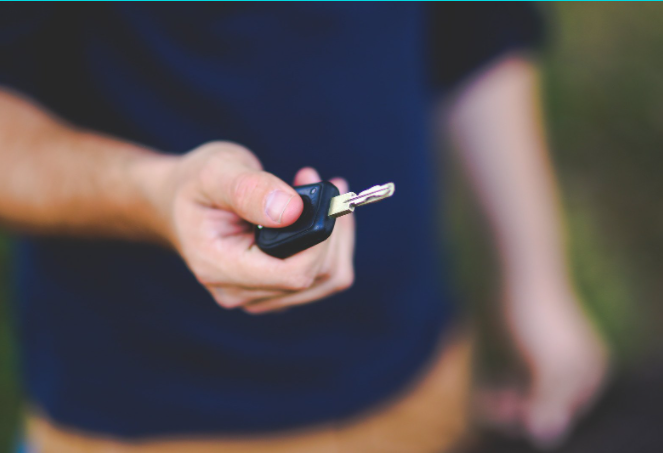If you are struggling with lower back pain that radiates down your leg, you might have hit the internet searching for answers, only to find the terms “sciatica” and “herniated disc” discussed frequently. This is because both conditions can cause debilitating back...
You open your eyes, stretch, and sit up, ready to start the day. But the moment your feet hit the floor, a sharp or aching pain shoots through your heels, arches, or the balls of your feet. Morning should feel refreshing, yet instead, you find yourself hobbling to the...
Are you a fitness enthusiast or a dedicated athlete who has suddenly been sidelined by a nagging, persistent pain in your calf and ankle? That sharp or aching sensation that flares up during or after activity could be the result of Achilles tendonitis. The Achilles...
When Can I Drive After Orthopaedic Surgery?

One of the biggest fears of patients undergoing joint replacement surgery is not being able to do everything they are used to doing for themselves – at least initially. Although this fear is normal, in some cases the potential loss of independence is more difficult to face than the surgery itself. For example, the thought of not being able to drive would understandably be a difficult pill to swallow.
On the Road to Recovery
Anne Colton, M.D., a board-certified orthopaedist with Premier Orthopaedics at Crozer Health, says that “although advancements in technology, such as minimally invasive techniques, have helped shorten recovery times and enabled patients to resume driving sooner, there are a number of factors related to the individual, the procedure, and the joint itself that determine one’s particular course.” Below are examples of the factors that will influence when you can expect to drive again:
- Physical condition and health before surgery
- Participation in rehabilitation or exercise program before surgery
- Automatic or standard transmission
- Replacement of right or left-side joint, or both
- of procedure (hip, knee, full, partial, etc.)
- Minimally invasive or open procedure
- Medications prescribed
- Insurance company (Some require your doctor to provide written documentation with their approval
How Quickly Can You Expect to Drive?
For those who have had hip surgery, some may drive as soon as two weeks after the procedure. Others may need longer; up to one or possibly two months. Your doctor will tell you when it is safe for you to drive. For those who have had right leg knee surgery and feel comfortable, it commonly takes about four weeks before you can get behind the wheel. Patients who have had surgery on their left knee may be able to drive sooner, again if comfortable. Dr. Colton notes, “The issue is the ability to use the brake, as reaction times for those who have had right hip or knee surgery may be slower than usual after their procedure. Of course, any delayed response in braking could be dangerous in an emergency or situation that requires quick action.”
Keeping Your Mind and Body Sharp
As expected, in order to resume driving, patients must no longer be taking pain medications. They can make you lethargic and affect your ability to function and react. Driving requires your reflexes and muscle strength to be restored. With physical rehabilitation, your flexibility and strength should improve significantly. Meeting both of these requirements will help ensure your safety, and that of others.
Getting Back in the Driver’s Seat
Whether driving or riding as a passenger, getting in and out of a car can present a few challenges, especially if your car is compact or a sports car. These models entail sitting low to the ground, which may make it difficult for you to get in and out of.
Following surgery, a nurse or physical therapist will teach you how to get in and out of the car. It is recommended that seats be adjusted to provide maximum legroom, and if the seat is too low, to add a pillow or folded blanket to elevate your position a few inches. Taking such actions will be more comfortable for you and help you avoid dislocation or falling.
Request for a Handicap Parking Placard
With driving usually comes parking. If you had not requested a handicap parking placard prior to your surgery, you should do so following your procedure, as it will ease your access to stores, libraries, the supermarket, etc. Simply request approval from your doctor, keeping in mind that specific regulations and required documentation vary from state to state.
If you are thinking about or scheduled for joint replacement and wondering about your ability to drive, be sure to talk to your surgeon regarding your concerns.
For more information about Premier Orthopaedics at Crozer Health, and/or a physician referral, fill out our appointment form or call 855-255-6468.
